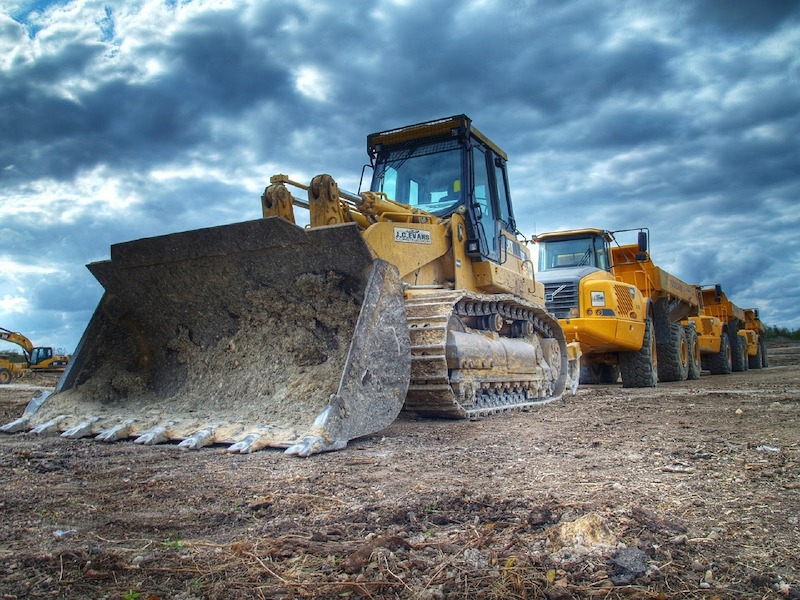Construction employment decreased from February 2020 – the last month prior to the pandemic – to April 2021 in 107, or 30%, of the nation’s metro areas, and was stagnant in another 34, according to an analysis by the Associated General Contractors of America of government employment data released today. Association officials said that construction employment in many parts of the country was being undermined by pandemic-induced project delays, materials price spikes and shortages, and difficulties finding labor.
“It is disturbing to see that nearly one-third of the nation’s metro areas had lower construction employment totals in the mild weather and strongly rebounding economy of April 2021 than in the winter of 2020,” said Ken Simonson, the association’s chief economist. “Ever-growing supply-chain bottlenecks and record prices for numerous construction materials threaten to further chill demand for job gains in many metros.”
Houston-The Woodlands-Sugar Land, Texas lost the largest number of construction jobs over the 14-month period (-29,300 jobs, -12%), followed by New York City (-22,300 jobs, -14%); Midland, Texas (-9,800 jobs, -26%); Odessa, Texas (-8,000 jobs, -39%); and Lake Charles, La. (7,200 jobs, -36%). Odessa had the largest percentage decline, followed by Lake Charles; Midland; Laredo, Texas (-23%, -7,200 jobs) and Longview, Texas (-23%, -3,400 jobs).
Construction employment was stagnant in 34 additional metro areas, while 217 metro areas—61%—added construction jobs over the pre-pandemic (February 2020) level. Indianapolis-Carmel-Anderson, Ind. added the most construction jobs over 14 months (7,900 jobs, 15%), followed by Chicago-Naperville-Arlington Heights, Ill. (6,300 jobs, 5%); Seattle-Bellevue-Everett, Wash. (6,200 jobs, 6%); Minneapolis-St. Paul-Bloomington, Minn.-Wis. (5,900 jobs, 8%); and Sacramento--Roseville--Arden-
Sierra Vista-Douglas, Ariz. had the highest percentage increase (44%, 1,100 jobs), followed by Fargo, N.D.-Minn. (34%, 2,500 jobs); Lawrence-Methuen Town Salem, Mass-N.H. (29%, 1,000 jobs); Bay City, Mich. (27%, 300 jobs) and Taunton-Middleborough-Norton, Mass. (22%, 700 jobs).
Association officials called on the Biden administration to take steps to address rising materials prices and growing labor shortages. These steps include removing tariffs on key construction materials like steel, lumber and aluminum. And they include ending unemployment insurance supplements that are providing incentives for qualified workers to stay off payrolls for now.
“Washington has put in place a number of artificial barriers that are holding back the construction industry’s recovery,” said Stephen E. Sandherr, the association’s chief executive officer. “Washington’s tariffs are making materials more expensive while its unemployment supplements are making workers more hesitant to return to payrolls.”
View the metro employment 14-month data, rankings, top 10, multi-division metros, and map.
Related Stories
Market Data | Oct 31, 2016
Nonresidential fixed investment expands again during solid third quarter
The acceleration in real GDP growth was driven by a combination of factors, including an upturn in exports, a smaller decrease in state and local government spending and an upturn in federal government spending, says ABC Chief Economist Anirban Basu.
Market Data | Oct 28, 2016
U.S. construction solid and stable in Q3 of 2016; Presidential election seen as influence on industry for 2017
Rider Levett Bucknall’s Third Quarter 2016 USA Construction Cost Report puts the complete spectrum of construction sectors and markets in perspective as it assesses the current state of the industry.
Industry Research | Oct 25, 2016
New HOK/CoreNet Global report explores impact of coworking on corporate real rstate
“Although coworking space makes up less than one percent of the world’s office space, it represents an important workforce trend and highlights the strong desire of today’s employees to have workplace choices, community and flexibility,” says Kay Sargent, Director of WorkPlace at HOK.
Market Data | Oct 24, 2016
New construction starts in 2017 to increase 5% to $713 billion
Dodge Outlook Report predicts moderate growth for most project types – single family housing, commercial and institutional building, and public works, while multifamily housing levels off and electric utilities/gas plants decline.
High-rise Construction | Oct 21, 2016
The world’s 100 tallest buildings: Which architects have designed the most?
Two firms stand well above the others when it comes to the number of tall buildings they have designed.
Market Data | Oct 19, 2016
Architecture Billings Index slips consecutive months for first time since 2012
“This recent backslide should act as a warning signal,” said AIA Chief Economist, Kermit Baker.
Market Data | Oct 11, 2016
Building design revenue topped $28 billion in 2015
Growing profitability at architecture firms has led to reinvestment and expansion
Market Data | Oct 4, 2016
Nonresidential spending slips in August
Public sector spending is declining faster than the private sector.
Industry Research | Oct 3, 2016
Structure Tone survey shows cost is still a major barrier to building green
Climate change, resilience and wellness are also growing concerns.
Industry Research | Sep 27, 2016
Sterling Risk Sentiment Index indicates risk exposure perception remains stable in construction industry
Nearly half (45%) of those polled say election year uncertainty has a negative effect on risk perception in the construction market.

















